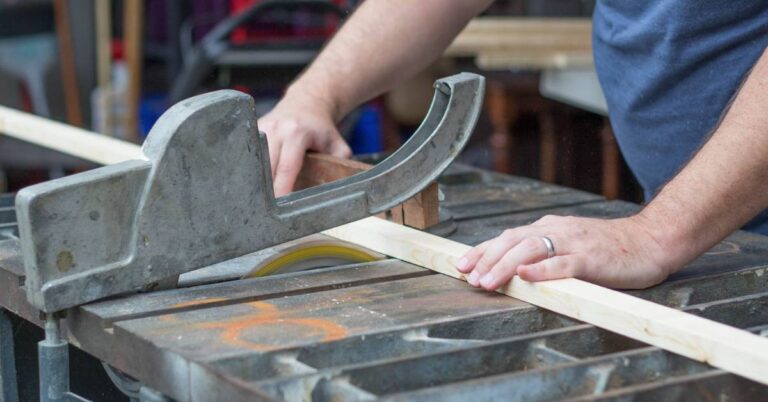Can You Drive in Work Boots: Safety Considerations for Operating Vehicles
Work boots are a common footwear choice for many professions, but their suitability for driving can be a concern. While it is generally safe to drive in work boots, certain factors should be considered to ensure optimal safety and comfort behind the wheel. The design and construction of work boots can impact pedal control and foot placement while operating a vehicle.
Drivers who wear work boots should be aware of potential challenges. Thick soles may reduce pedal sensitivity, while heavy or bulky designs could interfere with quick foot movements between pedals. Choosing work boots that balance protection and flexibility for safe driving is crucial.
Selecting appropriate work boots for driving involves considering sole thickness, ankle support, and overall weight. Boots with moderately thick soles and adequate flexibility can protect without compromising driving performance. Regular maintenance and inspection of work boots are essential to ensure they remain in good condition for work and driving tasks.
Key Takeaways
- Work boots can be worn while driving if they allow proper pedal control and foot placement.
- Drivers should choose work boots that balance protection and flexibility for safe vehicle operation.
- Regular maintenance of work boots is crucial for optimal performance in both work and driving situations.
Importance of Proper Footwear for Truck Drivers
Truck drivers require specialized footwear to ensure safety and comfort during long hours on the road. The proper boots provide essential protection and support for optimal performance behind the wheel.
Safety and Protection Features
Steel-toe work boots offer crucial protection for truck drivers. They shield feet from falling objects during loading and unloading tasks, and their sturdy construction also guards against impacts and compression.
Many work boots feature slip-resistant soles, reducing the risk of falls on slick surfaces. This is especially important when climbing in and out of the truck cab or walking on wet loading docks.
Waterproof materials keep feet dry in various weather conditions. This helps prevent blisters and fungal infections that can develop from prolonged moisture exposure.
Some boots incorporate electrical hazard protection. This safeguards against accidental contact with live electrical circuits.
Comfort and Support for Long Drives
Proper arch support is essential for truck drivers who spend extended periods seated. It helps maintain proper foot alignment and reduces fatigue.
Cushioned insoles absorb shock and provide comfort during long drives. Some boots offer removable insoles that can be customized or replaced as needed.
Ankle support is crucial for stability when operating pedals. High-top boots or those with padded collars offer enhanced ankle protection.
Breathable materials like leather or mesh panels promote air circulation. This helps regulate foot temperature and minimize sweat accumulation during long hauls.
Lightweight designs reduce foot fatigue, allowing drivers to maintain alertness throughout their shifts. Flexible soles enable natural foot movement for improved pedal control.
Essential Qualities to Look for in Work Boots
Certain features are essential for comfort, safety, and durability when selecting work boots for driving. The right materials and construction ensure long-lasting performance while proper protection shields against various hazards and weather conditions.
Material and Build Quality
Work boots should be made from high-quality materials like full-grain leather or synthetic alternatives. These provide durability and resistance to wear and tear. The stitching must be strong and reinforced, especially in high-stress areas.
A sturdy rubber sole offers traction and stability while driving. Look for boots with slip-resistant treads to prevent accidents when entering or exiting the vehicle. The insole should provide cushioning and support for long hours behind the wheel.
Consider boots with a steel or composite toe cap for added protection. These safeguard against falling objects or accidental impacts. Some drivers prefer lightweight composite materials for reduced fatigue during extended periods of use.
Weather and Hazard Protection
Waterproof or water-resistant work boots are crucial for drivers who may encounter wet conditions. Look for boots with waterproof membranes or treated leather uppers to keep feet dry in rainy weather or when walking through puddles.
Insulation is essential for those driving in cold climates. Thinsulate or similar materials provide warmth without adding bulk. For hot environments, breathable materials help prevent excessive sweating and discomfort.
Boots with electrical hazard protection can benefit drivers who may come into contact with electrical sources. These boots have non-conductive soles and heels to reduce the risk of electric shock.
Consider boots with puncture-resistant midsoles for added protection against sharp objects. This feature is handy when walking on construction sites or areas with potential hazards.
Selecting the Best Work Boots for Truck Drivers
Truck drivers need reliable footwear that balances comfort, safety, and durability. The proper work boots can significantly impact a driver’s daily routine and long-term foot health.
Tailored Choices for the Trucking Industry
Timberland Pro and Danner offer popular options for truck drivers. These brands provide steel-toe boots with anti-fatigue technology, which is crucial for long hours on the road. Caterpillar and Carhartt also produce quality boots with slip-resistant outsoles, which are ideal for various weather conditions.
Electrical hazard resistance is essential for truckers who may encounter unexpected risks. Soft-toe boots, offering more flexibility and comfort, can be suitable for drivers who are not required to wear steel-toe boots.
Proper fit is essential. Boots should provide ample toe room and arch support. Many drivers prefer boots with breathable materials to prevent foot fatigue during long hauls.
Budget Considerations and Value
Work boots for truck drivers range widely in price. Higher-end options from Timberland or Danner may cost more upfront but often offer superior durability and comfort.
More affordable alternatives from brands like Caterpillar can still provide necessary safety features. Some companies offer discounts or reimbursements for work-related footwear, which can offset costs.
Investing in quality boots can lead to long-term savings. Durable boots may last longer and require less frequent replacement. When evaluating value, consider factors like warranty, customer feedback, and after-sale support.
Versatility is another cost-saving aspect. Boots suitable for driving and loading/unloading tasks offer better overall value.
Compliance with Regulations and Maintenance of Work Boots
Work boots play a crucial role in workplace safety and compliance. Proper care and adherence to standards ensure optimal protection and longevity.
Understanding OSHA Standards and Best Practices
OSHA sets specific requirements for safety footwear in various industries. Steel-toed boots are mandatory in many construction and manufacturing settings. These boots must meet ASTM F2413-18 standards for impact and compression resistance.
Durable materials like leather uppers and oil-resistant soles are essential features. Puncture-resistant midsoles provide additional protection against sharp objects. Some industries require specific features such as electrical hazard protection or metatarsal guards.
Employers must ensure workers wear appropriate footwear for their job tasks. Regular inspections help maintain compliance and reduce the risk of workplace injuries.
Care Techniques to Extend Boot Life
Proper maintenance extends the lifespan of work boots—clean boots regularly with a soft brush to remove dirt and debris. Apply leather conditioner to prevent cracking and maintain flexibility.
Waterproofing treatments protect against moisture damage. Allow wet boots to air dry naturally, away from direct heat sources. Boot trees or crumpled newspapers can absorb moisture and maintain shape.
Replace worn laces and insoles as needed. Polish leather boots to protect the surface and enhance their appearance. Rotate between multiple pairs to allow adequate drying time between uses.
Address repairs promptly to prevent further damage. Many work boot brands offer resoling services for durable boots, extending their usable life.




